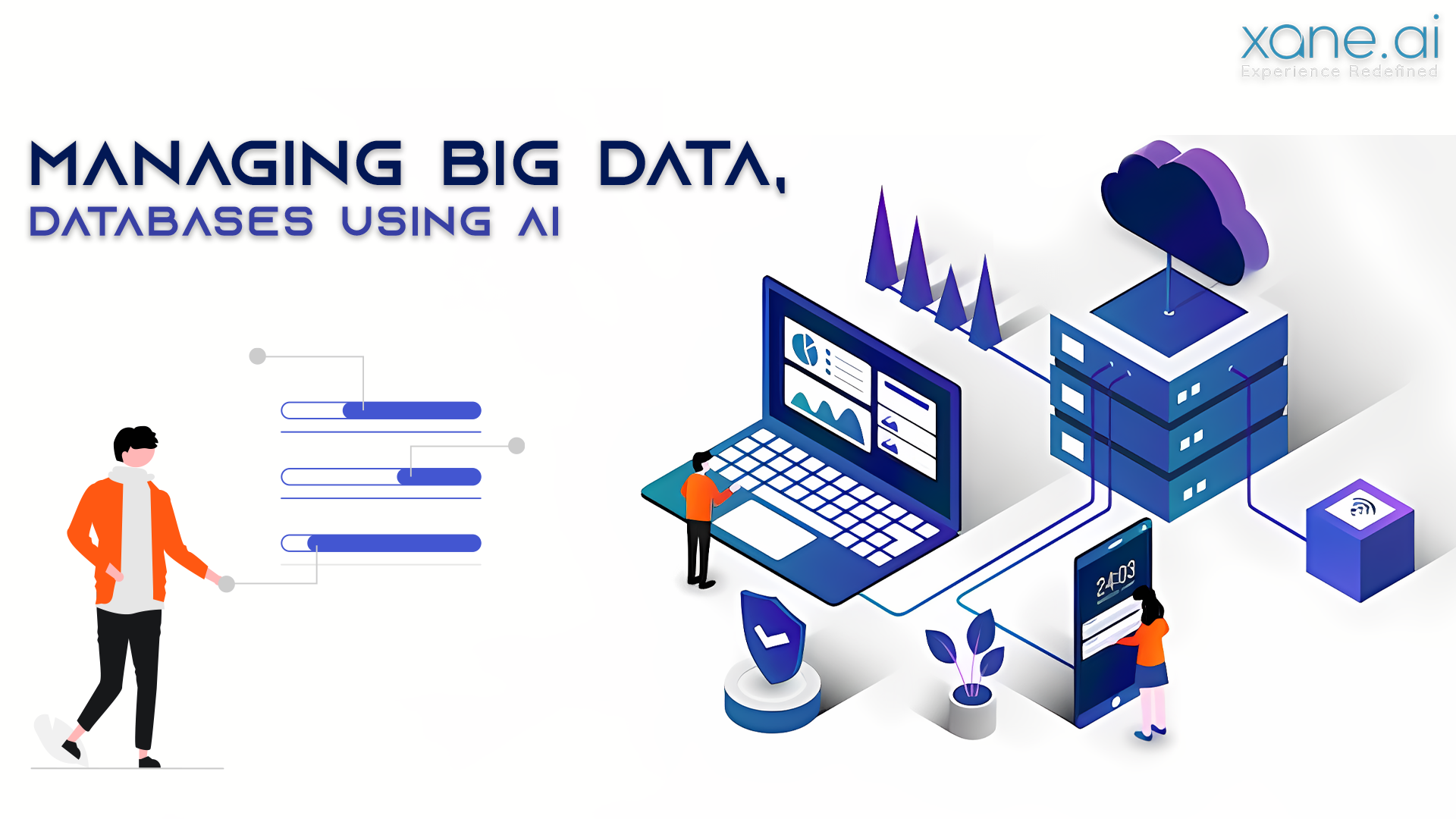
16 Feb Managing Big Data, Databases Using AI
Blog by Oluwasegun Ole
Working with big data was initially looked upon as being reserved for highly cognitive individuals who are well versed in the application of traditional analytics tools, using pre-defined strings of commands, to manipulate its spatial arrangement, and derive exclusive insights from its information. As it was then a rigorous and time-intensive process, that demands the application of a wide variety and complex scientific data knowledge, and a consistent level of astuteness, to effectively perform and make useful contributions to such ever-increasing big data challenges. As the global population grows, and more consumer digital items, such as smartphones, laptops, tablets, and IoT devices continue to gain prominence, massive data volume continued to be accumulated, with only as little as 5 percent being processed to boost business decision-making strategies.
Most especially, big commercial enterprises that are data-driven became heavily strained and were unable to convert it to useful insights, to perform already lined-up projects. Primarily as a result of having to contend with a complex and unique colossal amount of data, at the time. Data had outpaced and exceeded accessible technology and available techniques, in scope, dimension, magnitude, and more. These information deficits chaoses, in the face of the massive influx of data, started impacting negatively, thereby fueling the beginning of what had become a poor business decision-making era.
However, in order to turn around what holds great potential to degenerate into a global economic meltdown, concerted efforts to put in place a permanent solution was embarked upon by data scientists, computer geeks, mathematicians, IT professionals, among others. Along the way, their diligence paid off, and the term artificial intelligence was coined. However, many believe the book published on “Computing Machinery and Artificial Intelligence by Alan Turing in 1950, played a leading role, in its discovery.
To top off this digital revolutionary breakthrough, AI integration property was a huge plus. As it allows for automation-intensive processes, which open further additional back door tools, to cut down on expensive operational hiatuses. With this realization, smart city projects, with great potential, were accomplished in a shorter span, leveraging AI data-driven solutions. Not to mention that one of those foremost solutions, remains AI’s ability to learn from the influx of big data, replicate their velocity, values, veracity, among others, and utilize such inbuilt similarities, to perform better, when there is a humongous volume of data.
Big Data
Big Data remains the rawest form of data and depicts the influx of massively extensive varieties, from different sources. It, therefore, contains a fair share of both useful and invalid information, under different velocities. And yet indeed, the data with the highest amount of both reliable and inconsistent information. However, in the world of AI, big data can be fully harnessed to extract useful information and actionable insights, which are then leveraged to personalized products and services, for correlated market shares.
Big Data Integration
Big data integration is the act of combining digital data, sourced from different internal departmental computer networks of data-driven enterprises. By this, accurately defined components in such data can quickly be processed and stored in databases, before being channeled for big data analytics purposes.
Big Data Replication
Stored data ought to uphold its calling and maintain its weight, at any point in time. To do this, Change Data Capture technology is vital, to intervene and replicate data, even while being written, edited, or deleted. And this can be accomplished by instantaneously copying it from such sources, and then installing backups, in one or more locations. This ensures that data analytics takes place, by falling back on those backups, as it continues to get instant updates, even on every account when user data are simultaneously being modified.
Data Ingestion
Cleaning, sorting, and modeling (replicating) of raw data, upon being channeled away instantaneously in spurts from different sources, is a process that data ingestion accommodates, with high accuracy, before surging particles of such data are streamlined into a secure location, such as a data lake and data warehouse, for big data analytics.
Data Unification, Solidification, and Storage
All previously streamlined and surging pools of data, are then channeled into separate homogeneous divisions and collected for storage – using a data lake or data warehouse.
Big Data Governance
An essential process that enables IT departments of any business enterprise to restrict or control access to already stored data, by spearheading document profiling, and allocating tasks, in accordance with each data source. It improves security and aids in proper data management.
Big Data Analytics
It involves myriads of data manipulating processes, which attribute deep meanings and selective tasks to big data. For instance, data are easily recovered from every source, and evaluated for errors, before storage. And by parsing data, tags are allotted to each data and clearly defined information is established.
AI allows for flexibility in data, and assists in automating, as well as spotting inconsistencies in their spatial arrangements. And by spontaneously detecting anomalies and alerting systems, it keeps potential threats away. And also as it learns both direct and contextual meanings of data, it manages tasks at great length and serves as a repertoire of knowledge. Furthermore, by engaging in constant monitoring of events in big data analytics, it puts in place standard frameworks, that help users better understand sources of varieties of data.
Structured Big Data
Structured big data are well arranged and clearly defined, in such a way that, it can be easily accessible to both humans and computers. And it usually takes a tabular arrangement or form, with both columns and rows, which adapts its data well to be contained or stored in datasets, spreadsheets, and databases.
Semi-structured Big Data
It is roughly estimated data, with no attachment to a particular data model. And since its tag, but yet unorganized, it makes it hard to derive complex information or draw actionable facts from it, using traditional analytics tools. Besides, unlike structured big data, it has no rational databases. Although, with some applicable procedure, corresponding databases may be allocated.
Unstructured Big Data
It is data that does not conform to the ideals of structured data, as its information segments are not distributed in compliance with a pre-set data model. Unstructured big data can be indeed massive, given that it often measures up to over 85 percent in volume of data generated from all sources, at any instant. Due to this considerable weight ratio, AI, coupled with machine learning has been introduced to reveal laden actionable facts, in order to turn the wheels and accelerate high-quality and exclusive decision-making strategies.








